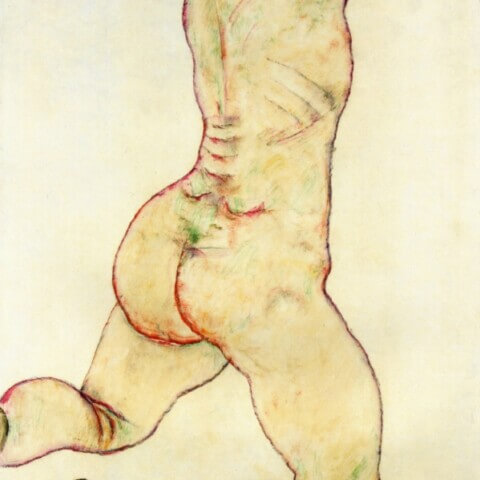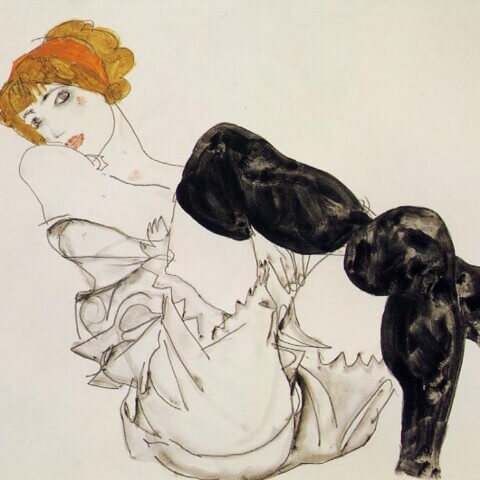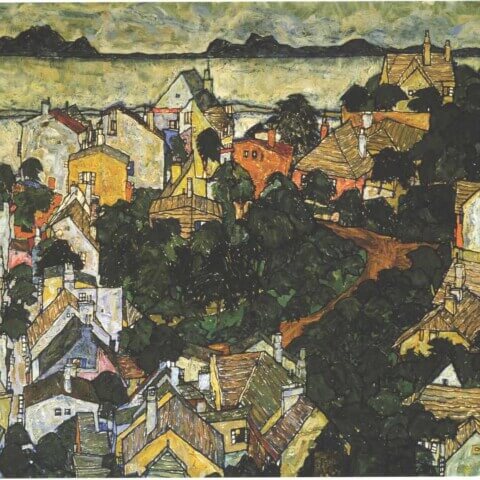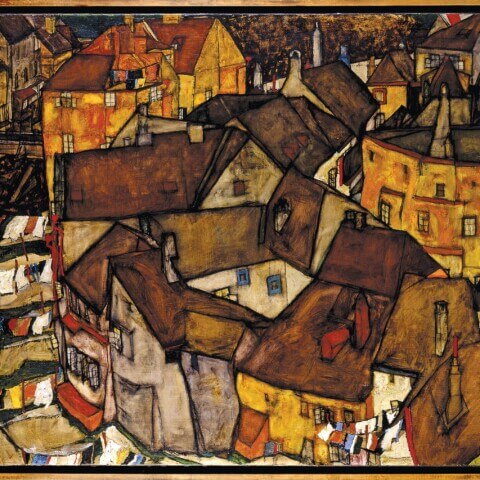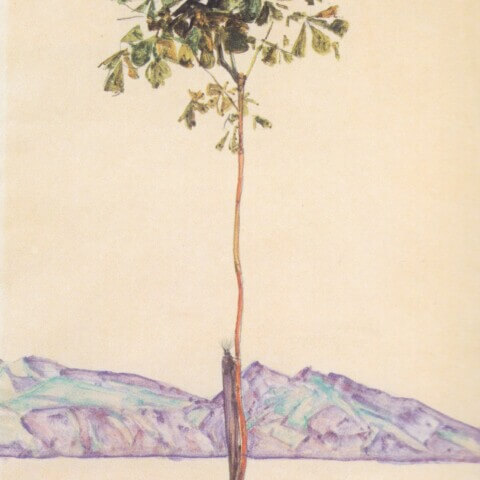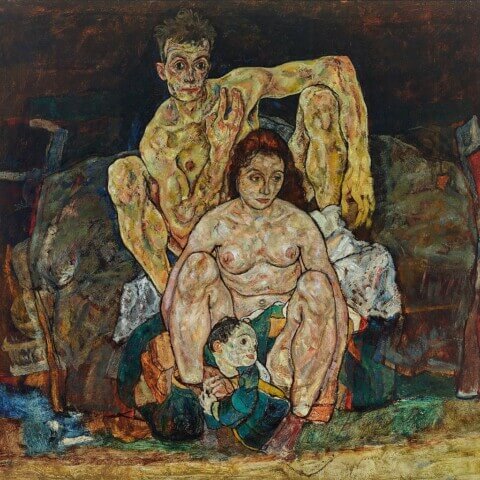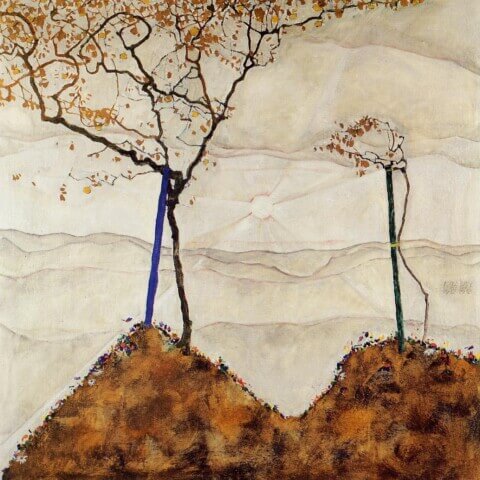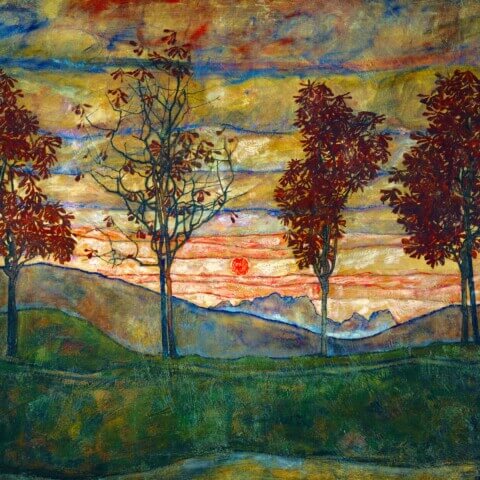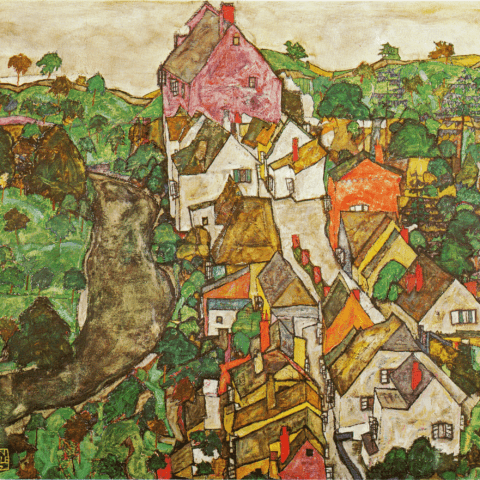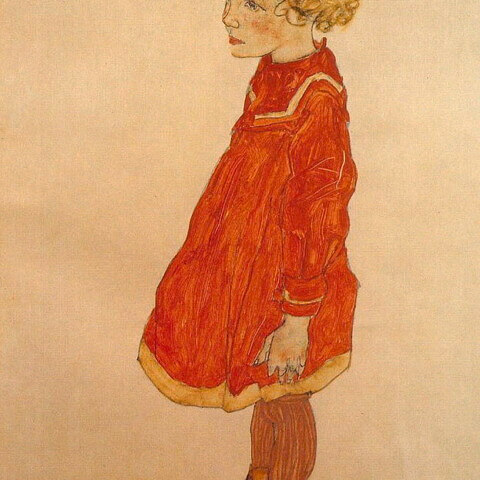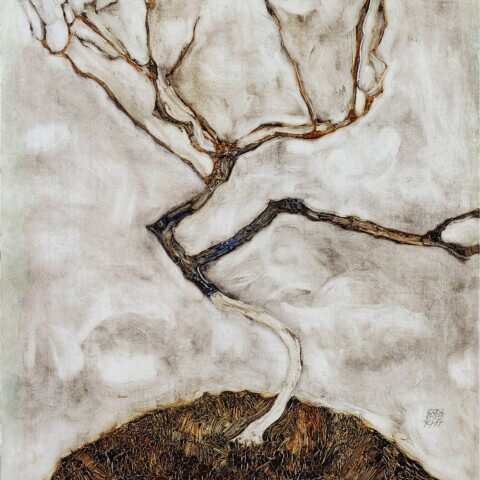Egon Schiele
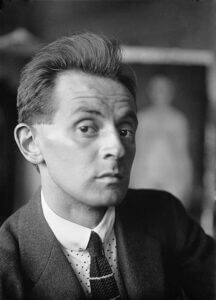
Egon Schiele (1890–1918) was a prominent Austrian figurative painter associated with the early 20th-century Expressionist movement. Known for his intense, provocative, and often explicit depictions of the human body, Schiele’s work broke through societal norms and conventions, revealing an expressive, raw, and emotionally charged side of art that had not been widely explored before.
Schiele was born on June 12, 1890, in Tulln, Lower Austria. From an early age, he exhibited a strong interest and aptitude for drawing. His passion for art was deeply encouraged by his uncle, who became his guardian after the untimely death of Schiele’s father in 1905. In 1906, at the age of sixteen, Schiele was admitted to the prestigious Vienna Academy of Fine Arts, where he was initially influenced by the academic style and traditional techniques.
The pivotal turning point in Schiele’s career occurred in 1907 when he was introduced to Gustav Klimt, the leading figure of the Viennese Secession movement. Klimt took a particular interest in Schiele, mentoring him and introducing him to the vibrant art world of Vienna. This relationship deeply influenced Schiele’s artistic vision, and he began to explore themes of eroticism, death, and rebirth in his work.
Schiele’s work often pushed the boundaries of societal norms, and he developed a distinctive style characterized by distorted figures, dramatic lines, and a unique use of color. His subjects, often nude and portrayed in unconventional, awkward poses, were rendered with an intensity and rawness that was considered shocking at the time.
In 1912, Schiele’s daring approach to art and the human form led to his arrest on charges related to the display and distribution of immoral artworks. His trial and subsequent short imprisonment had a profound impact on his work, leading to a somewhat more restrained approach, although he never abandoned his exploration of the human body and psyche.
Despite his early death from the Spanish flu in 1918, at the age of 28, Schiele left an extensive body of work comprising over 3000 drawings and around 300 paintings. His contribution to the Expressionist movement was immense, and he is remembered as one of the most significant and innovative artists of the early 20th century. Egon Schiele’s work continues to be celebrated today, reflecting on the timeless power of his artistic vision and his unique understanding of the human condition.

